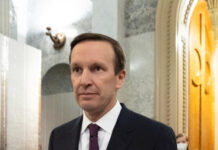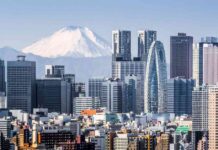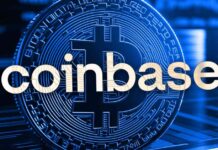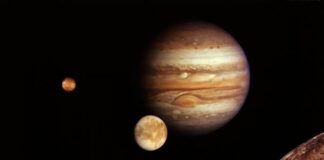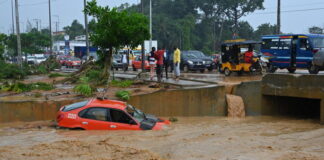The fall of the USSR appears to the former Soviet republics as an opportunity and a risk. The Ukrainian economy was then so intertwined with that of Russia that the sudden severance of ties would have destabilized it. Nevertheless, Ukraine reserves room for maneuver by not contributing to the creation of a new USSR: it refuses to sign the statutes of the CIS. Then, it tries to promote alternative organizations to the CIS without Russia, such as GUAM (Georgia, Ukraine, Azerbaijan, Moldova), which brings together states having tensions with Moscow. Ultimately, there is a dual attitude in Ukraine: it is part of the CIS without renouncing to emancipation from Russia.
Like in a couple who rushes to sign the divorce document before they have finished dividing the common property. Yeltsin, in a hurry to put an end to the Soviet heritage, concerned about the good relationship with the West and monopolized by internal crises, skirts the issues of Crimea and the Black Sea Fleet, for which he has been reproached in Russia. Despite the problems, agreements are signed: that on Friendship, Cooperation and Partnership (1997) recognizes the inviolability of the borders and the territorial integrity of Ukraine, which retains Crimea. The solution to the nuclear question is found with the Budapest memorandum, signed in 1994 with the participation of the United States and Great Britain. Thus, Ukraine renounces the status of nuclear power and all atomic weapons are transferred to Russia, which, in return, reaffirms its respect for the territorial integrity of Ukraine.
These are the thorniest issues, sources of tension between kyiv and the Crimean authorities, which several pro-Russian separatist forces have been calling for reintegration into Russia since the fall of the USSR. We tend to forget it, but a mediation mission of the Organization for Security and Cooperation in Europe (OSCE) worked from 1994 to 1999 to stabilize the situation in Crimea. In other words, the seeds of conflict are already there. The game calms down under the presidency of Leonid Kuchma, a clever politician who gives pledges of autonomy to Crimea and reassures Moscow. This autonomy allows the peninsula to live with one foot in Russia (with the Black Sea Fleet, the subsidiary of the Russian University, the Russian-speaking media) and the other in Ukraine. Regarding the Black Sea Fleet, there have been discussions about the creation of a joint fleet, attempts by each side to submit it to its authority and a division: the Russian fleet and the Ukrainian fleet are stationed in Sevastopol on two separate bases, and the Russian side undertakes not to deploy nuclear weapons in Crimea. This evolution is accompanied by recurring tensions. In 2010, President Yanukovych signed the Kharkiv agreements for the lease for the Russian fleet until 2042, agreements that were shattered after the Maidan and the annexation of Crimea.
Post-Soviet states have a common problem: they have remained in an unfinished transition for three decades. On the one hand, Russia keeps their economies afloat, displays advantageous prices for hydrocarbons, absorbs their production, provides security services or its job market, without however offering an attractive model of economic and political modernization. As for the European Union (EU), it does not offer clear prospects for membership of these countries, unlike those of Central Europe. It is therefore difficult to get out of established patterns, and Ukraine swings at the mercy of pro-Russian or pro-European presidencies, while remaining prey to a predatory oligarchy, corruption and a semi-comfortable dependence on of Russia.
Yes, but the Kremlin sees the hand of the West everywhere. However, without the seeds of revolt in society, no Western support can capsize the boat. This is also the same problem that Russia faces when it tries to organize the “Russian spring” (pro-Russian movement in favor of autonomy) in the Donbass in 2014. Even under military constraint, the impact is limited. Unlike the Ukrainian elites, society ends up getting tired and wants to live differently. The desire for change, the concrete mobilizing objectives (cancelling the results of the fraudulent elections in 2004, signing the association agreement in 2013), the absence of political foreclosure and repression as in Russia, the attraction of the EU , Western support, these are the ingredients of the Ukrainian social revolutions in the name of an emancipation from the “Russian world”.
The Eastern Partnership dates from 2009 and the Association Agreement from 2013, more than twenty years after the fall of the USSR. It cannot be said that the EU is rushing to anchor Ukraine. The EU and NATO have had ambiguous policies towards this country. If we take the case of NATO, its half-open door to Ukraine since the Bucharest summit in 2008 is a factor of irritation for Russia, without constituting a guarantee of security for Ukraine. .
President Putin disputes the very existence of the Ukrainian state in the current territory, but the fall of the USSR made Ukraine a sovereign state, a member of the UN! One of the most often repeated words in Russian diplomacy is “sovereignty”. But for the countries of the former USSR, Moscow still thinks in terms of “limited sovereignty”. It is sometimes forgotten, but Ukraine did have “non-bloc” status in its previous version of the Constitution, which it renounced after the annexation of Crimea to introduce the objective of NATO membership. and to the EU.
If the annexation of Crimea has skyrocketed Putin’s popularity, the primary reasons are security and strategic: Putin anticipates Ukraine’s shift towards the EU and NATO and the potential threat to the the black Sea. He also feels the ease with which he can recover this Russian-speaking and Russophile territory without a shotgun blast.
The text of the Minsk II agreements contains insoluble problems from the outset. For the Russians, this is an internal Ukrainian civil conflict and they are inciting kyiv to talk directly with the separatists, while for the Ukrainians they are puppets of Moscow, the only and real party to the conflict. Disagreements also relate to sequencing: Moscow wants to first organize local elections in the Donbass before returning control of the Russian-Ukrainian border to kyiv, which is asking for the reverse order. The agreements were to give Russia leverage: a special status of the two breakaway regions would have allowed them to block Ukraine’s strategic choices. This is why Ukraine is putting the brakes on, because it sees it as a threat to its sovereignty.
Bad calculations, bad information coming from his services have combined with a negative emotional background in Vladimir Putin with regard to Ukraine, this rebellious country which has made him suffer failures since the “orange revolution”. He wants to fight it out once and for all, bring kyiv back into his fold, and probably recreate a three-way Slavic union with Belarus. One hundred years after the creation of the USSR in 1922, this union would have been a way to erase the humiliation of the “greatest geopolitical catastrophe”, which is its fall.
Indeed, total victory does not seem possible, but failure is unacceptable to Putin, who is thus condemned to continue the “special military operation” whatever the cost. It seems implausible that he will withdraw from Donbass or the already conquered southern territories. At high speed, the Russians introduced the rouble, changed curricula in schools or even signboards from Ukrainian to Russian… Partition of the country, annexation of these territories, push towards Odessa to make the land junction with Transnistria in Moldova? These options are on the table. The real objectives are revealed from the first days of the war with the attack on kyiv: they suppose the suppression of sovereign Ukraine. So even if, since then, Russia has had to back down and revise its initial targets downwards, Putin can come back to finish the job.
Not immediately. Russian society, plagued by propaganda and repression, poses no threat to the regime, although the worsening situation will weaken support for Putin over time. As for the elites, they have a lot to lose from the sanctions, their daily life has become a permanent stress, and the specter of repression hangs over future scapegoats. A lasting crisis with no prospects for an exit can make the idea of a change of leader attractive. But we are not there yet.
Despite sanctions and arms shipments to Ukraine, the West keeps emphasizing that it is not at war with Russia. He is afraid of being drawn into what would be a third world war, a fortiori nuclear. Nearly four months after the start of the war, we are reaching the limit of military aid to Ukraine without emptying its own stocks, and of the sanctions that can be imposed without jeopardizing its economy. Western solidarity is being tested, as shown by the difficult talks around the Russian oil embargo in the sixth sanctions package.
The fractures are likely to widen if the war lasts, and trust may be weakened between Europeans and Americans, but also between Europeans who do not have the same vision of the aims of the war, the urgency of the talks and the future of relations with Russia. This will play into the hands of Vladimir Putin, who is counting on these dissensions to weaken, or even break, the unity of the West.
The suffering suffered in this war will never be erased from Ukrainian memory. European history has known real reconciliations, as with Germany after 1945, but this required deep work on memory, of which the Nuremberg tribunal was the starting point. The future of Russian-Ukrainian relations will depend on post-war reconciliation acts and Russian developments. Will she ever accept the existence of a sovereign and independent Ukraine? Will she be able to give him sufficient guarantees that the attack will not happen again? The republics of the former USSR also have several cases where conflicts persist in a so-called “frozen” form, but the hatchet is not buried, as in Nagorno-Karabakh.
The desire for the European Union and NATO has grown among the Ukrainian population. If the candidacy is accepted at the European summit in June 2022, which is not won, Ukraine will only be at the start of a long process. NATO is another story. Zelensky himself spoke of his country’s possible neutrality at the start of the war. In fact, kyiv is focusing on joining the EU, not NATO.
It brings to light the divergences of visions between Russia and the EU on the evolution of the world, the means of weighing in international affairs and values. For the EU, the fall of the USSR is the beginning of an “end of history”, of leadership ensured by economic attractiveness, of the acceptance of democracy as the best model. Old-fashioned warfare with tanks and the taking of territories has no place. In 2014 and even more today, the EU is rediscovering the balance of power, the importance of investing in defence. Institutions like the UN are paralyzed and the European security architecture is bankrupt. The old post-bipolar world is over, the new multipolar world wanted by Russia promises to be extremely brutal, and the EU fears its marginalization and the stranglehold between the United States and China.
This war consolidates Ukrainian national identity, but risks reinforcing anti-Russian nationalism. Hard for it to be otherwise for a people so brutally attacked and threatened in its very existence. President Zelensky is not the magician who can handle this alone, even if the war strengthens his legitimacy. The European Union will have to give a European perspective to Kyiv, anchor it in the values to which it has been attached since 2014. To let it lock itself into a grudge and a feeling of abandonment or betrayal on the part of the EU would be the worst solution. •




